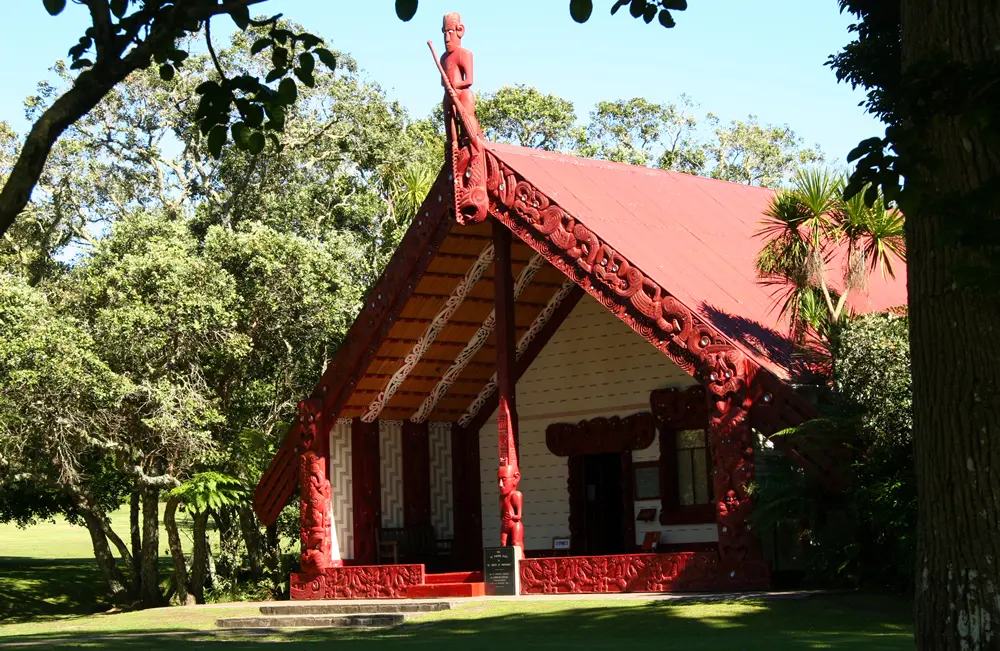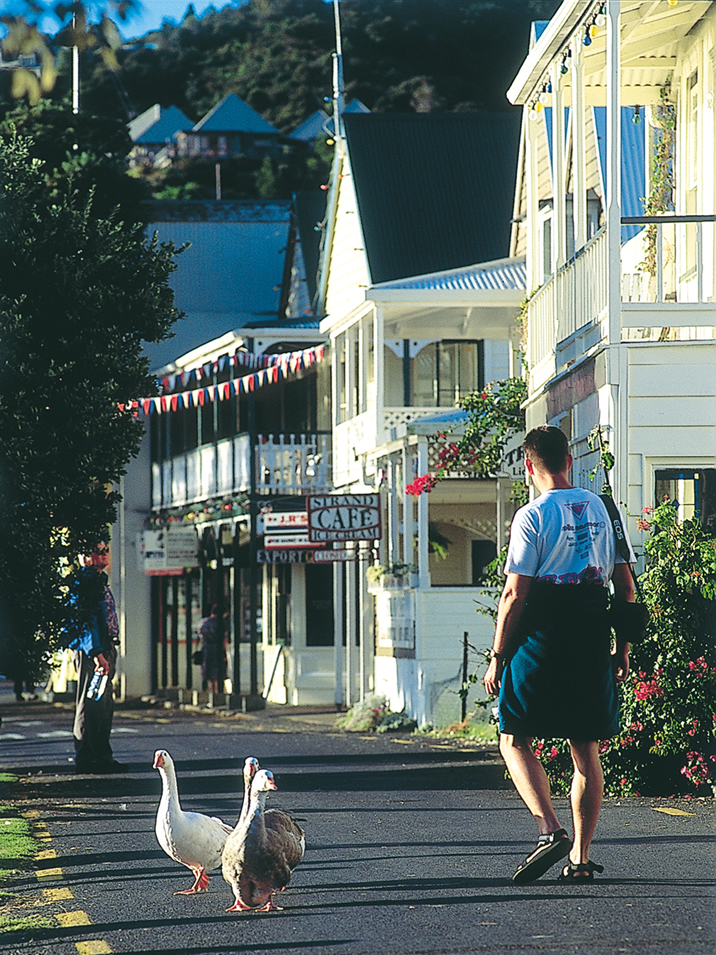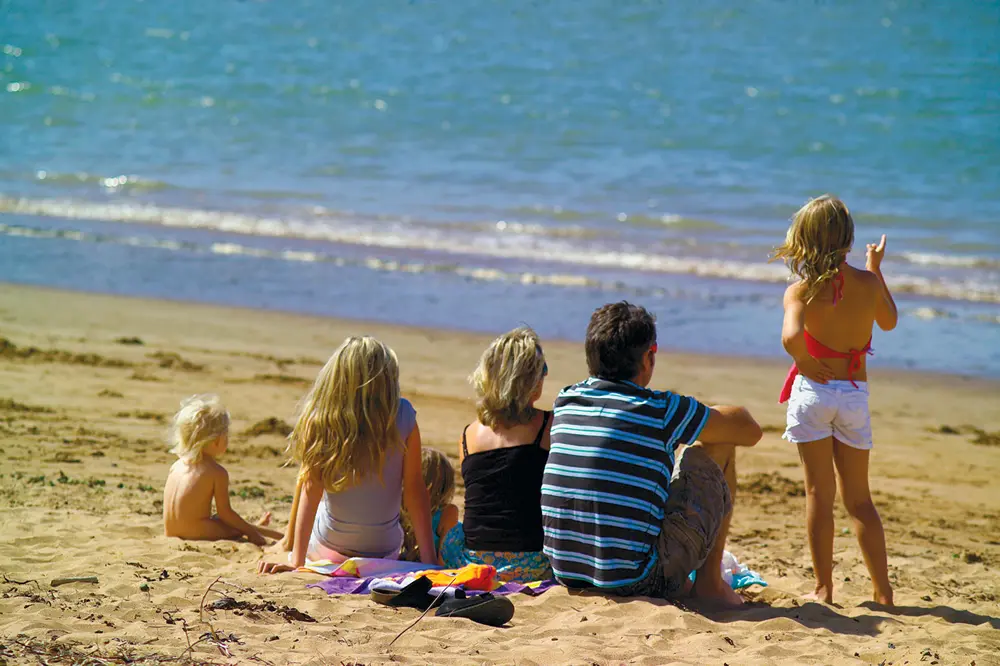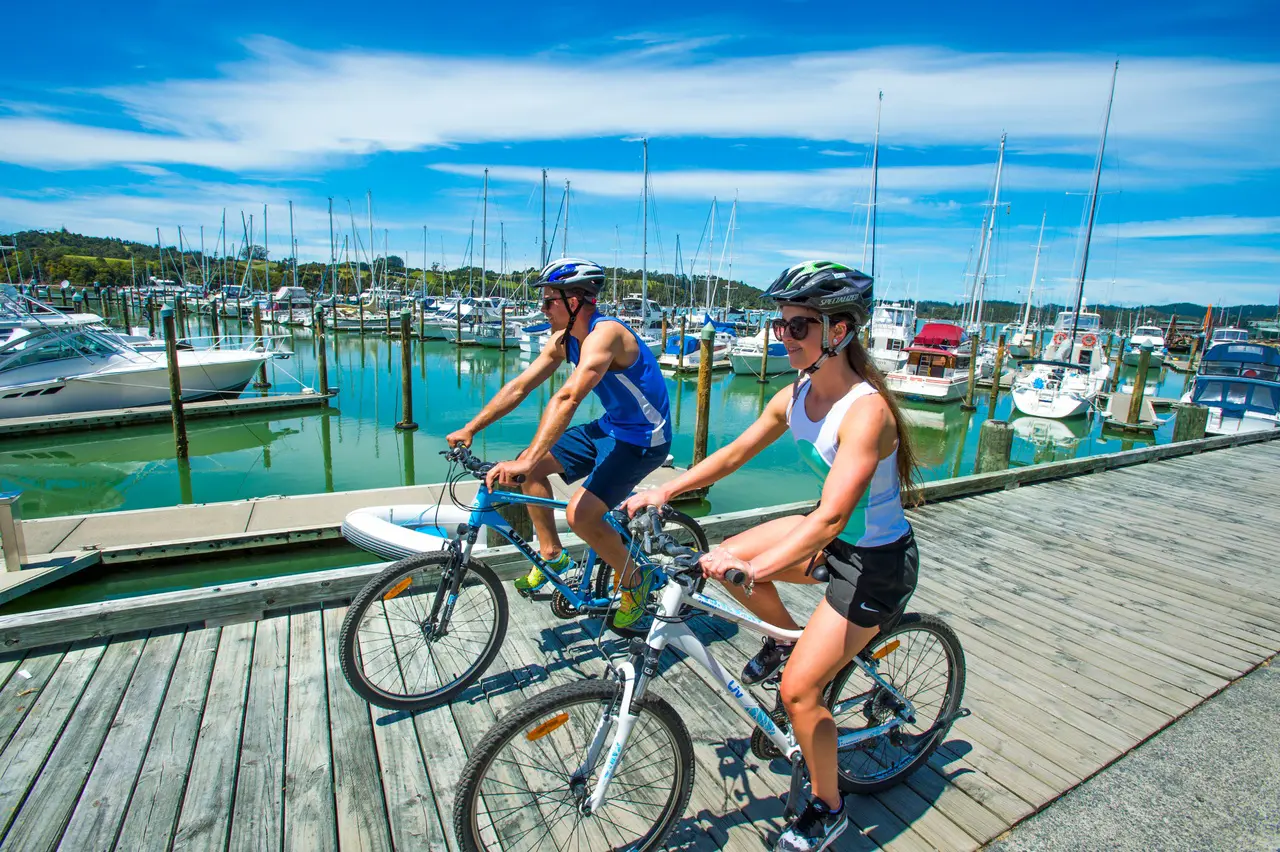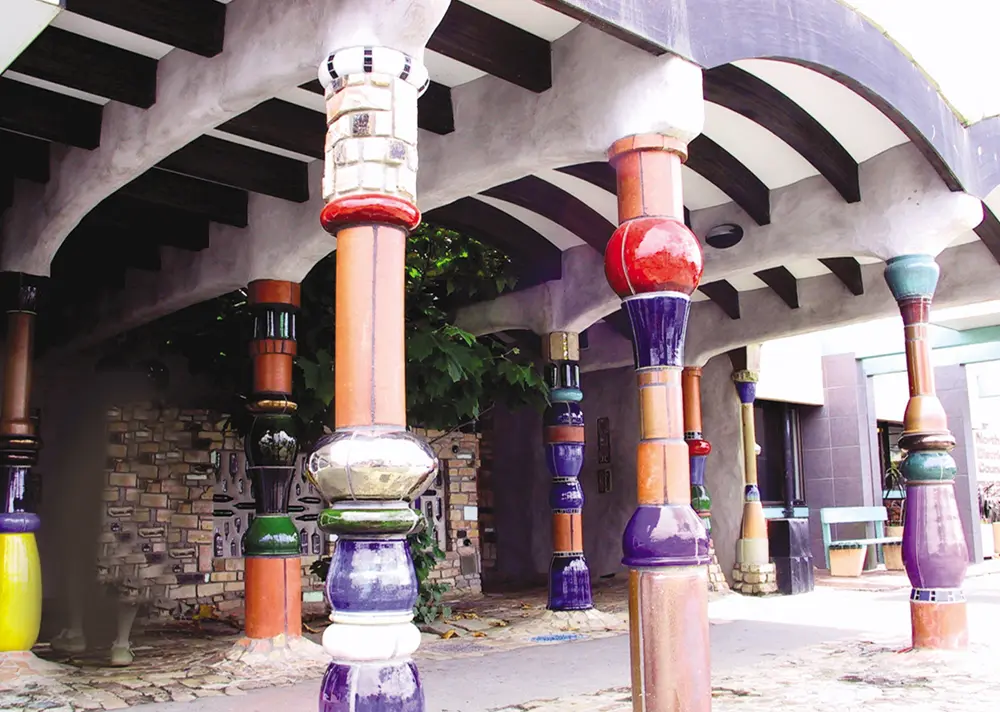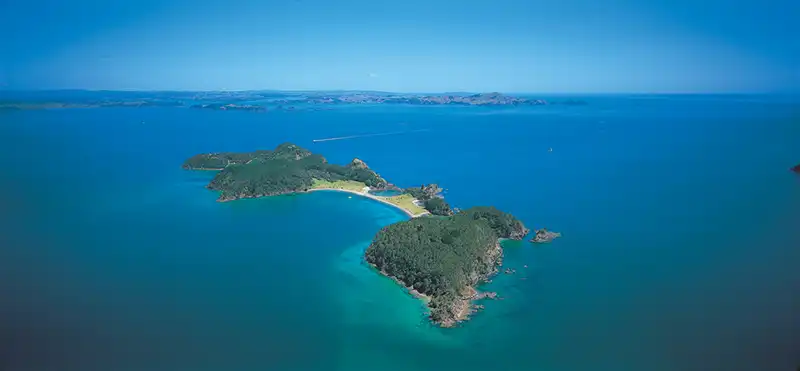Whangaroa sits tucked away on Northland’s east coast, a spectacular natural harbour that has remained refreshingly uncrowded despite its extraordinary beauty. With fiord-like cliffs plunging into the ocean, Whangaroa is arguably one of the most stunning coasts you’ll find on the North Island. The harbour’s name translates to “a long wait,” referencing a Māori legend of a woman who watched the horizon for her husband fighting in the south. Today, visitors find the wait to discover this hidden gem worthwhile, as Whangaroa delivers dramatic volcanic landscapes, protected native bush, exceptional fishing, and a peaceful atmosphere that contrasts beautifully with busier destinations to the south.
The harbour is mostly protected as a nature reserve, with untouched areas featuring spectacular rock outcrops and stunning views. From the water, towering volcanic plugs like St Paul’s Rock and Duke’s Nose create an almost prehistoric landscape. On land, regenerating native forest cloaks the hillsides, while the small settlement of Whangaroa Harbour provides a laid-back base for exploration. What’s more, the Whangaroa Harbour is only 45 minutes north of the Bay of Islands, yet so many travellers miss it. Those who do make the journey discover a destination where natural beauty takes center stage and the pace of life slows to match the gentle harbour waters.
A Dramatic History
In December 1809, about 70 people were killed in retaliation for the mistreatment of Te Ara of Ngāti Pou. Five survived. The attack was in retaliation for the whipping of their rangatira (chief) Te Ara, who had been punished with a cat o’ nine tails during his voyage from Sydney aboard the Boyd. After the massacre, Māori took the Boyd back to their village where they tried to extract gunpowder from barrels. The gunpowder ignited when a flint was struck, burning the ship down to the waterline. The incident delayed the establishment of the first Christian mission in New Zealand and caused shipping visits to fall to “almost nothing” over the next few years. Today, relics from the Boyd are displayed in the Kaeo Museum, offering a sobering reminder of this turbulent period in New Zealand’s early contact history.
Why Visit Whangaroa
Dramatic Natural Beauty: With forest-covered islets and outcrops, cliffs, deserted white-sand beaches, and Māori archaeological sites, the Whangaroa Harbour is a natural beauty. The harbour’s volcanic landscape creates scenery unlike anywhere else in Northland, with towering rock formations rising directly from the water.
World-Class Fishing: Whangaroa is often called the ‘Marlin Capital of New Zealand’ by locals and the sport-fishing community. The harbour provides access to some of the country’s best game fishing grounds, with marlin, tuna, shark, and kingfish all within reach. The Whangaroa Big Gamefish Club on the waterfront serves as the social hub for anglers.
Uncrowded and Authentic: With the popular and developed Bay of Islands just to the south, the Whangaroa Harbour tends to be overlooked by travelers. That’s good news for those who do make it here, because they’re treated to near-deserted beaches, peaceful fishing spots, remote Northland settlements, and some of the most beautiful nature in New Zealand.
Adventure and Relaxation: Whether you want to hike to spectacular viewpoints, kayak through sheltered waters, dive famous wrecks, or simply relax on a quiet beach, Whangaroa delivers without the crowds found at more developed destinations.
What to See & Do in Whangaroa
Hiking & Scenic Walks
Whangaroa’s dramatic volcanic landscape creates exceptional hiking opportunities with rewarding harbour views.
St Paul’s Rock Track is a worthwhile walk that climbs through native bush for about 30 minutes to reach the volcanic plug of the mountain – known as St Paul’s Rock – and takes in sensational views of the Whangaroa Harbour. The track starts from a car park at the end of Hospital Road in Whangaroa township. Chains assist with the final steep climb to the summit, where 360-degree views reveal the harbour’s full extent. This relatively short hike makes an excellent introduction to Whangaroa’s landscape and is accessible to most fitness levels.
Wairakau Stream Track and Lane Cove Hut is another fantastic hiking trail in Whangaroa Harbour. With two stream crossings, perhaps muddy sections after rain, and steep terrain, this 2-hour one-way trip is plenty of excitement. The track comes to an end at Lane Cove and the Lane Cove Hut, where you can stay overnight. The hut is situated in Lane Cove at the western end of Pekapeka Bay in Whangaroa Harbour and sleeps 16 people. The hut must be booked online in advance through the Department of Conservation. Lane Cove Hut sits right on the edge of Te Rere Bay in the Whangaroa Harbour, and it’s only a two-hour walk to get to the secluded bay with amazing views. Alternatively, you can reach the hut by water taxi from Whangaroa township, making it accessible even if you don’t want to hike in with full overnight gear.
Duke’s Nose (Kaiaraara Rocks) is a 45-minute one-way hike that starts behind Lane Cove Hut and climbs to spectacular views overlooking the Whangaroa Harbour – a must-do if you have the time. The trail has metal wires at the end to help you climb the rocks. This challenging climb rewards hikers with perhaps the best views in the entire harbour area. The distinctive rock formation resembles a hawk’s nose or duke’s profile, giving the landmark its name.
Sport Fishing
Known as the “Marlin Capital of New Zealand,” Whangaroa has earned international recognition as one of the country’s premier game fishing destinations. The deep waters off Whangaroa’s coast provide excellent grounds for marlin (black, blue, and striped), yellowfin tuna, sharks, and kingfish. The season typically runs from January through May, with peak marlin activity in February and March. Professional charter operators work from Whangaroa Harbour, offering fully equipped boats and experienced crews for everything from relaxed harbour fishing to serious offshore pursuits suitable for complete novices through to seasoned anglers.
Whangaroa Big Gamefish Club on the waterfront welcomes visitors with day memberships. This is the social heart of Whangaroa’s fishing community, where anglers gather to share stories, enjoy meals on the deck overlooking the harbour, and participate in fishing tournaments throughout the season.
On the Water
Whangaroa’s sheltered harbour and dramatic fiord-like landscape make it perfect for exploring by boat. Harbour cruises and water taxis depart from Whangaroa Marina, taking visitors to beautiful bays, remote beaches, and Lane Cove Hut while providing insights into the area’s fascinating geology. Kayaking and paddleboarding offer intimate ways to explore hidden coves and paddle past dramatic rock formations, with guided tours available for those wanting local knowledge. The harbour’s calm conditions suit beginners, while experienced paddlers can venture further along the spectacular coastline.
Sailing and yacht charters take advantage of Whangaroa’s excellent natural harbour and proximity to beautiful cruising grounds. The harbour provides safe anchorage and the Whangaroa Marina offers good facilities for yachties.
Beaches
Taupo Bay sits approximately 15 – 20 minutes north of Whangaroa Harbour, offering a long golden sandy beach ideal for swimming, sunbathing, and beach walks. The bay provides good surf at times and remains relatively uncrowded even in summer. This is a beautiful spot for a day at the beach with clear water and scenic surroundings.
Matauri Bay lies about 20-25 minutes by car from Whangaroa Harbour, featuring stunning golden sand and views across to the Cavalli Islands. Matauri Bay is the final resting place of the Greenpeace flagship, the Rainbow Warrior, which was bombed by French agents in Auckland Harbour in 1985 and later scuttled here as a dive site and artificial reef. A memorial to the Rainbow Warrior sits on the clifftop above the bay. The beach itself offers excellent swimming and is perfect for a relaxed day by the water.
Tauranga Bay, Mahinepua, and Wainui provide additional beach options within 15-20 minutes of Whangaroa Harbour. These small, secluded bays offer golden sand, clear water, and a sense of having found your own private beach. The coastline in this area features numerous small coves and beaches waiting to be discovered.
Diving & Snorkeling
The famous Rainbow Warrior wreck attracts divers from around the world. The former Greenpeace flagship, bombed in Auckland in 1985, was deliberately sunk in Matauri Bay where it now serves as an artificial reef supporting abundant marine life. The wreck sits in about 25 meters of water and provides an excellent dive for intermediate and advanced divers. Local dive operators offer guided trips to the Rainbow Warrior and other dive sites around the Cavalli Islands and outer reefs.
The clear waters around Whangaroa Harbour also offer good snorkeling opportunities in sheltered bays, where you can observe reef fish, stingrays, and other marine life in the calm, clear conditions.
Golf
Whangaroa Golf Club welcomes visitors to their 18-hole course set amidst native and exotic trees in park-like grounds. This charming local club provides a relaxed golfing experience with excellent natural surroundings. Green fees are reasonable and the course offers a pleasant challenge for golfers of all abilities.
Kauri Cliffs Golf Course at Matauri Bay (about 15 minutes from Whangaroa) is a prestigious world-renowned championship golf course that often features in world rankings. This spectacular clifftop course, part of a luxury lodge, offers dramatic ocean views and world-class facilities. While significantly more expensive than the local club, Kauri Cliffs provides an unforgettable golfing experience for serious golfers.
Day Trips from Whangaroa
Puketi and Omahuta Forests (40 minutes from Whangaroa) are renowned for magnificent kauri – the largest species of tree in New Zealand. A popular walk suitable for families and wheelchair users is the Manginangina Kauri Walk, a 15-minute boardwalk loop that showcases enormous kauri trees. The forests also offer longer walks like the 4-hour Piriou Ridge Track. Guided nature tours provide insights into the forest’s ecology and lesser-known sites. Remember to use boot-wash stations to help protect kauri from kauri dieback disease.
Mangonui and Doubtless Bay (30 minutes north) offers a historic fishing village with waterfront cafés, boutique shops, and the famous Mangonui Fish and Chip shop. The Doubtless Bay area features 70km of golden sandy beaches, the spectacular Karikari Peninsula, and wineries like Carrington Estate where you can enjoy local wines with coastal views.
Cape Reinga (2.5 hours from Whangaroa) at New Zealand’s northern tip makes an epic day trip. Cape Reinga is the northernmost tip of New Zealand where you can see the meeting of the Tasman Sea and the Pacific Ocean – they’re two distinct colors. This culturally significant place holds deep spiritual meaning in Māori tradition as the leaping point for spirits departing to Hawaiki. While it’s possible to drive yourself, many visitors join guided tours that include Ninety Mile Beach and giant sand dunes.
Practical Information
Getting There
From Auckland: Approximately 300km (about 3.5 hours’ drive north via State Highway 1, then State Highway 10).
From Bay of Islands/Paihia: 55km (approximately 40 minutes north via State Highway 10).
From Kerikeri: 35km (approximately 30 minutes via State Highway 10).
By Bus: Limited public transport serves Whangaroa. InterCity coaches stop at Kaeo (7km from Whangaroa Harbour), from where you’ll need alternative transport to reach the harbour.
Driving Directions: From State Highway 1, turn onto State Highway 10 heading toward Kaeo and Mangonui. At Kaeo, follow signs to Whangaroa Harbour (approximately 7km). The road descends dramatically to reveal spectacular harbour views as you approach.
How Long to Stay
It’s possible to come to Whangaroa Harbour on a day trip from Kerikeri, but most visitors want to spend a bit longer exploring the area, so at least a single overnight is a good idea.
2-3 nights allows time for:
- Hiking St Paul’s Rock and/or the Wairakau Stream Track
- A fishing charter or harbour cruise
- Day at nearby beaches
- Visit to Puketi Forest or Mangonui
4-5 nights suits those wanting to:
- Overnight at Lane Cove Hut with Duke’s Nose hike
- Multiple fishing expeditions
- Diving the Rainbow Warrior wreck
- Explore multiple beaches and day trip destinations
- Fully embrace the slower pace
What to Bring
Essential Items:
- Sun protection (hat, sunscreen SPF 30+, sunglasses) – the New Zealand sun is strong
- Insect repellent (sandflies can be present in some areas)
- Comfortable walking shoes or hiking boots
- Light rain jacket (weather can change)
- Swimwear and beach towel
- Camera for the spectacular scenery
For Hiking:
- Sturdy footwear with good grip (trails can be muddy)
- Daypack with water and snacks
- First aid kit
For Lane Cove Hut:
- Sleeping bag (hut has mattresses but no bedding)
- Portable stove and cooking equipment
- Food and water treatment (hut water needs boiling)
- Torch/headlamp
- Toilet paper
For Fishing:
- Charters provide equipment, but bring sunscreen, hat, and camera
- Seasickness medication if prone to motion sickness
Facilities & Services
Whangaroa Harbour settlement has limited facilities:
- Whangaroa Big Gamefish Club (restaurant and bar, day memberships available)
- Whangaroa Marina with fuel and basic supplies
- General store and petrol station at nearby Totara North
The nearest town with comprehensive services is Kaeo (7km), which has:
- General store
- Petrol station
- Whangaroa County Museum (with Boyd artifacts)
For major shopping, banking, medical facilities, and supermarkets, head to Kerikeri (35km, 30 minutes’ drive).
Mobile phone coverage is generally good around Whangaroa Harbour but can be patchy in more remote hiking areas.
Visitor Tips
Book Lane Cove Hut Well in Advance: This popular DOC hut fills quickly, especially on weekends and during summer. Book online through the Department of Conservation website as soon as your dates are confirmed.
Check Weather Before Hiking: The Wairakau Stream Track involves stream crossings that can become difficult or dangerous after heavy rain. Check forecasts and local conditions before setting out.
Protect Kauri Trees: When hiking in forests with kauri trees, always use boot-wash stations to help prevent the spread of kauri dieback disease. This is critical for protecting these ancient native trees.
Bring Cash: Some local businesses may not accept cards. The nearest ATMs are in Kaeo or Kerikeri.
Fill Up Before Arriving: While fuel is available at Totara North, prices may be higher than in larger towns. Consider filling up in Kerikeri before heading to Whangaroa.
Respect the Harbour: Much of the surrounding coastline and headlands are protected as scenic reserves. The harbour itself is not a marine reserve, so please follow local guidelines and care for wildlife. Take all rubbish with you, avoid disturbing wildlife, and follow all marine protection guidelines.
Fishing Season: If targeting marlin, plan your visit for January through May, with February and March offering peak fishing. Book fishing charters well in advance during this period.
Experience Whangaroa
Whangaroa rewards those willing to venture beyond the well-trodden tourist paths. This is not a destination of bustling waterfront developments or endless dining options. Instead, Whangaroa offers something increasingly rare: a chance to experience dramatic natural beauty in relative solitude, where the landscape dominates and human development remains modest and respectful.
The harbour’s volcanic geography creates scenery that seems almost prehistoric. Towering rock formations rise directly from sheltered waters, native forest cloaks the hillsides, and walking tracks lead to viewpoints that reveal the harbour’s full magnificence. Whether you’re standing atop St Paul’s Rock, looking down from Duke’s Nose, or simply watching the sun set over the water from the deck at the gamefish club, Whangaroa’s beauty feels both powerful and peaceful.
For anglers, Whangaroa delivers world-class fishing without the crowds found at more famous destinations. The thrill of hooking a marlin, the skill required to land a kingfish, and the camaraderie of the gamefish club create an authentic fishing experience. For hikers, the combination of challenging terrain and spectacular rewards makes every trail memorable. For those seeking simply to escape, Whangaroa’s quiet beaches, calm waters, and relaxed pace provide the perfect antidote to busy modern life.
Unlike destinations that try to be everything to everyone, Whangaroa knows what it is: a place of natural beauty, authentic experiences, and peaceful solitude. Come here not for resort amenities or non-stop entertainment, but for dramatic landscapes, genuine hospitality, and the chance to experience one of Northland’s most spectacular harbours before the rest of the world discovers it.
Local Listings to Explore
Accommodation
Find your Whangaroa base from waterfront motels and luxury lodges to holiday homes and the unique Lane Cove Hut experience. Options remain limited, so book ahead, especially during summer and fishing season.
Browse Accommodation options in the Bay of Islands
Tours & Activities
From fishing charters and harbour cruises to guided kayak tours and hiking experiences, discover the activities that make Whangaroa special.
Browse more Tours & Activities in the Bay of Islands
Food & Drink
Dining options in Whangaroa are limited mainly to the Whangaroa Big Gamefish Club, which offers excellent meals with stunning harbour views. Additional dining options are available in nearby Kaeo, Mangonui, and Kerikeri.
Map
Sorry, no records were found. Please adjust your search criteria and try again.
Sorry, unable to load the Maps API.


